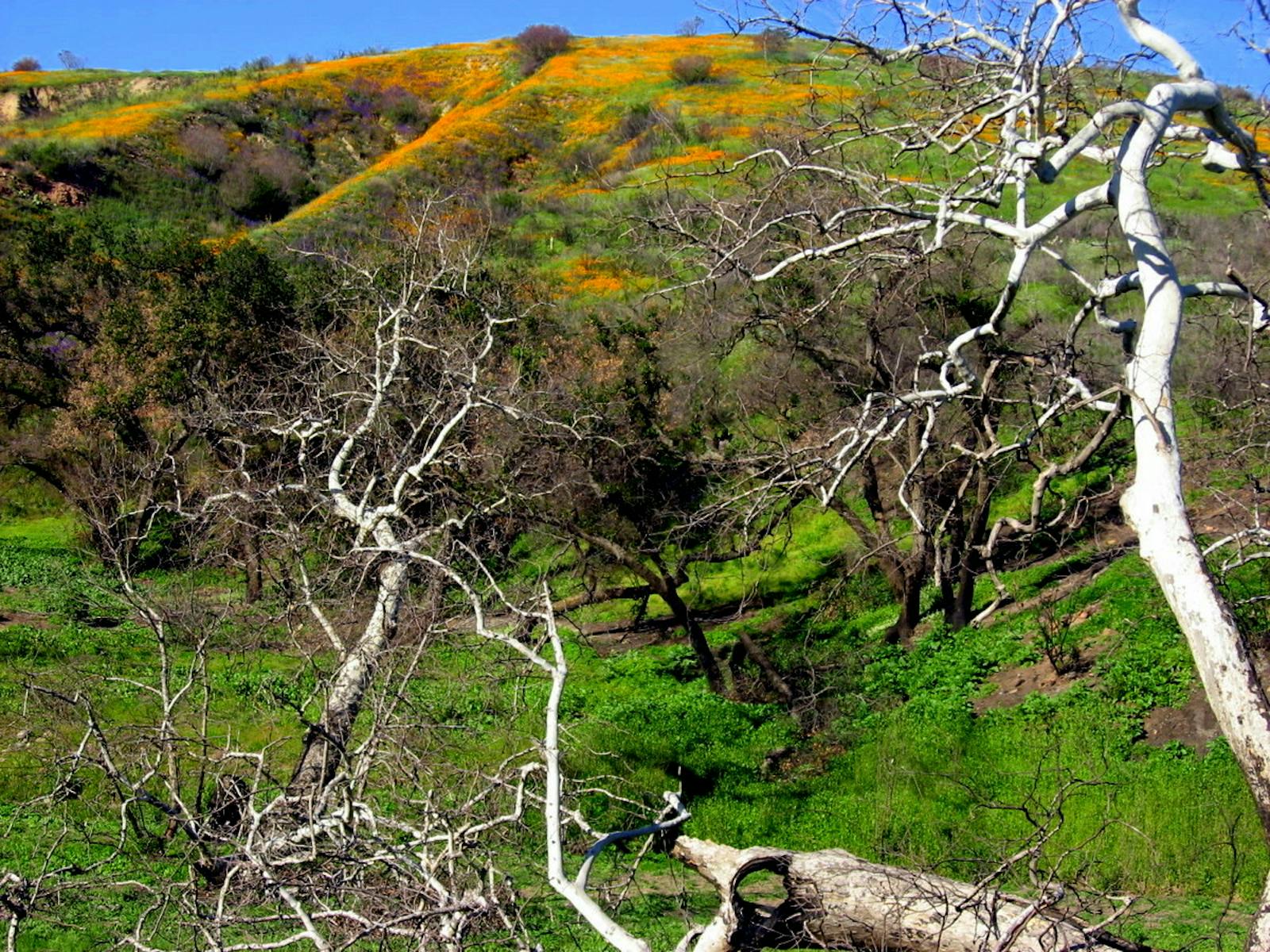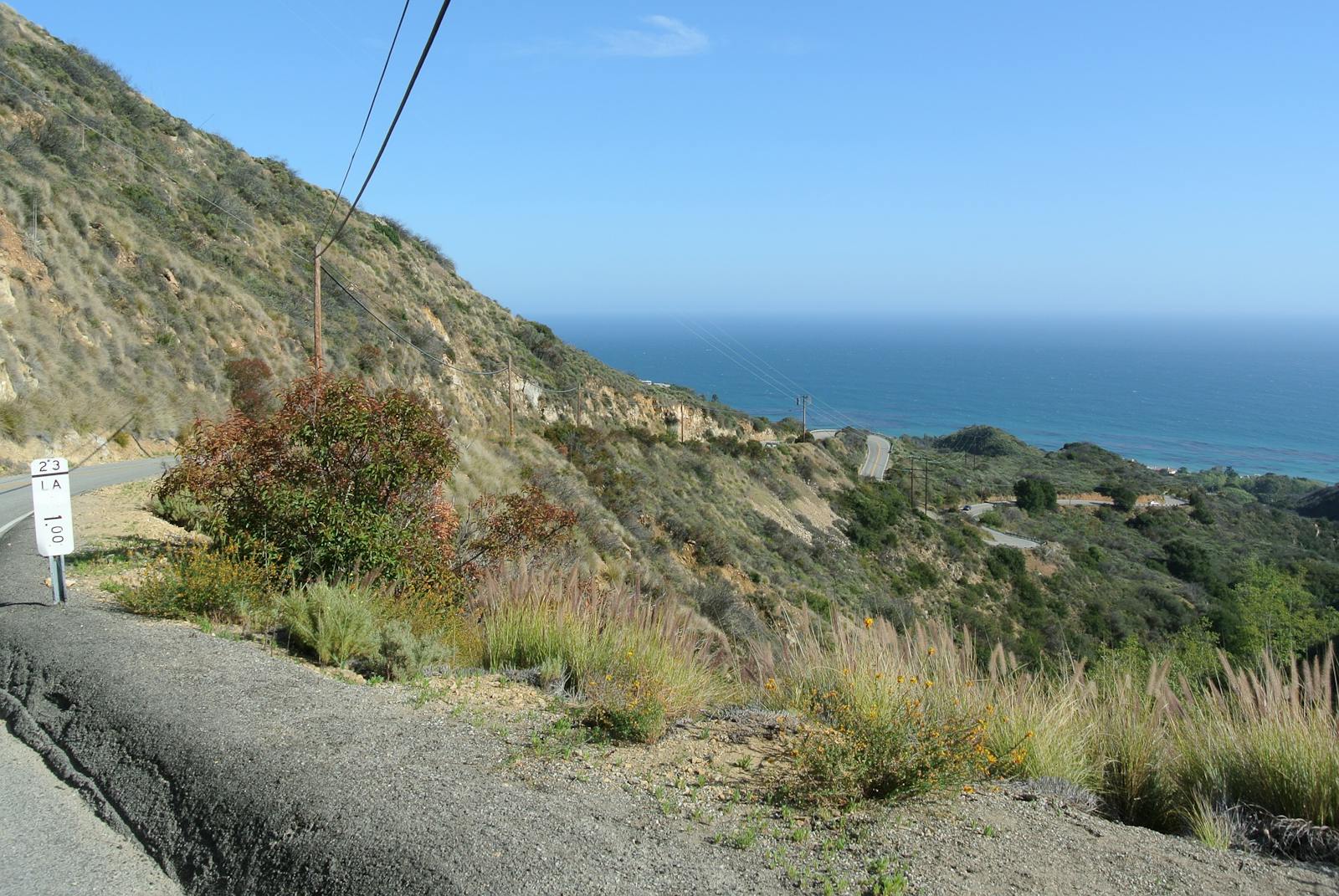California Coastal Sage and Chaparral
The ecoregion’s land area is provided in units of 1,000 hectares. The protection goal is the Global Safety Net (GSN1) area for the given ecoregion. The protection level indicates the percentage of the GSN goal that is currently protected on a scale of 0-10. N/A means data is not available at this time.
Bioregion: Greater California (NA31)
Realm: Northern America
Ecoregion Size (1000 ha):
3,297
Ecoregion ID:
422
Protection Goal:
14%
Protection Level:
5
States: United States: CA. Mexico: B.C.
The California Coastal Sage and Chaparral ecoregion is a biologically rich but threatened region that stretches from the vicinity of Santa Barbara, California, southward along the coastal plain, coastal terraces, and mountains south of the east-west Traverse Ranges to northeastern Baja California, Mexico.
This ecoregion is bounded on the north and east by the California Montane Chaparral and Woodlands ecoregion, also on the east by the Sonoran Desert ecoregion, on the south and southwest by the Baja California Desert ecoregion, and on the west by the Pacific Ocean. The eight California Channel Islands are also included in this ecoregion, as are Isla Guadalupe and Isla de Cedros west of the Baja Peninsula.
This ecoregion is incredibly diverse, with major natural communities including inland and coastal sage scrub, chamise chaparral, oak woodlands, montane conifer forests, riparian woodlands, grasslands, and salt marshes, among others.
The climate of this ecoregion is dry Mediterranean, with hot, sunny, and dry summers and cooler, wetter winters. In San Diego, approximately the north-south center of the ecoregion, the average monthly temperature ranges from 14.1ºC in January to 22ºC in August. Some 344 days each year in San Diego are warmer than 16ºC but only 25 days are above 27ºC. Hence the attractiveness for human settlement.
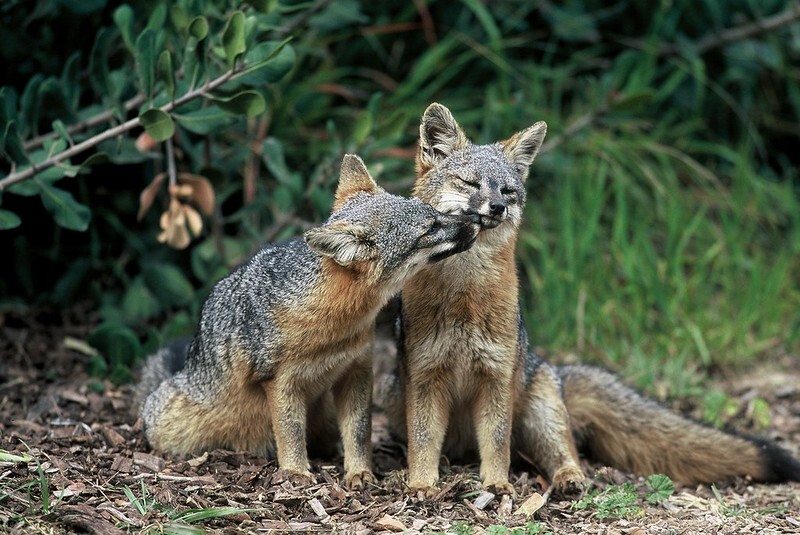
Two Channel Island foxes. Image credit: USFWS, Creative Commons
Average annual precipitation is less than 300 mm, but highly variable from year to year. Strong, warm, and dry winds known as “Santa Anas” blow westward and downslope from the deserts and mountains, especially in autumn but also in winter, often fanning wildfires. Although most vegetation types in this ecoregion have fire-adapted plants, lightning is uncommon, so natural fires were infrequent, though usually severe.
Chaparral requires two or more fire-free decades to recover from fire, but today the prevalence of human ignitions has greatly increased fire frequency, with deleterious effects on both natural and human communities. Coastal sage scrub, sometimes called soft chaparral, is a low, aromatic shrubland of black sage, white sage, California sagebrush, California buckwheat, toyon, and many other plants.

Catalina ironwood leaves. Image credit: public domain
Cacti and other succulents are more abundant in coastal sage scrub in Baja California. Coastal sage scrub occurs on coastal terraces and foothills below around 1,000 m and has been greatly impacted by urbanization, with more than 90% lost to development. Another major vegetation type is chamise chaparral, dominated by chamise along with several species of manzanita, Ceanothus, and many other plants.
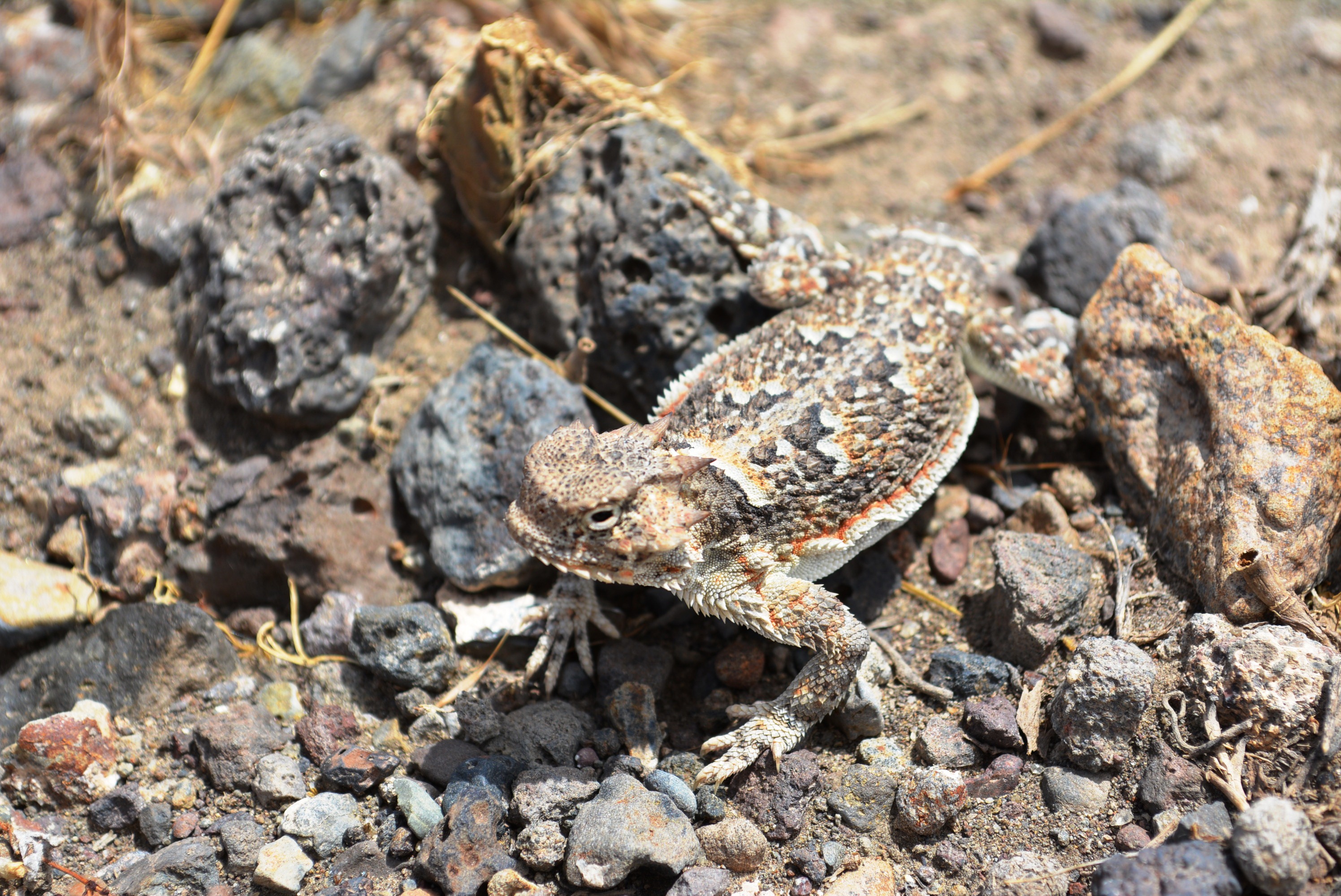
Coast horned lizard. Image credit: Creative Commons
Among the numerous rare and endemic species in coastal sage scrub and chamise chaparral are plants in the genus Dudleya, the Quino checkerspot butterfly, San Diego pocket mouse, San Diego horned lizard, red-diamond rattlesnake, Stephens kangaroo rat, the coastal population of cactus wren, and the California gnatcatcher, a bird whose listing as Threatened under the U.S. Endangered Species Act in 1993 spurred many conservation planning initiatives.
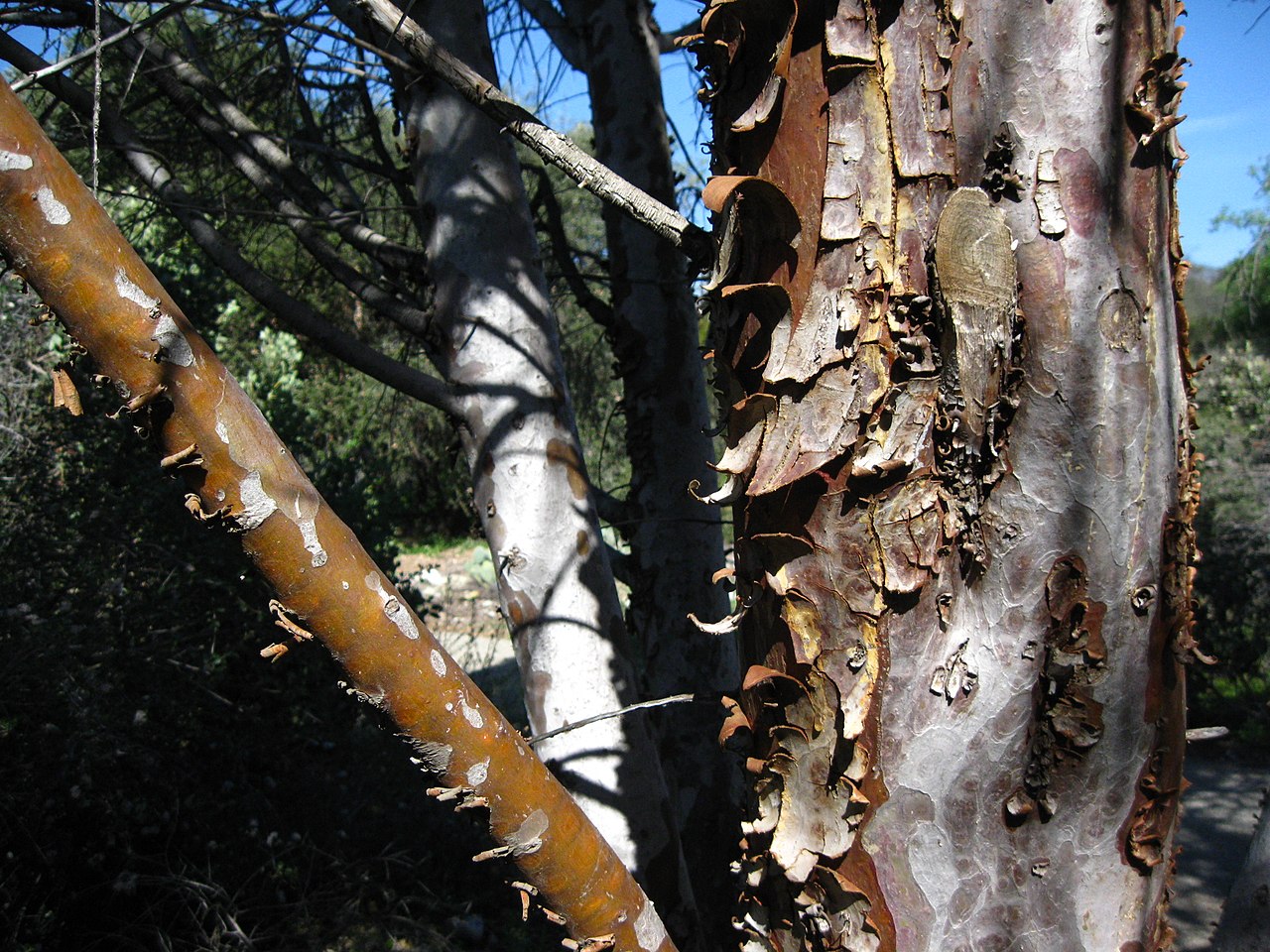
Cuyamaca cypress trunk. Image credit: Creative Commons, Themodoccypress
Oak woodlands and savannas once covered much of the foothills and plains of the ecoregion, walnut woodlands were common in northern areas, and riparian woodlands of coast live oak, sycamore, willows, and other plants lined streams. Higher mountain areas contain forests of bigcone Douglas-fir (a Southern California endemic), sugar pine, white fir, ponderosa pine, Jeffrey pine, Coulter pine, and incense cedar. Cuyamaca cypress and Tecate cypress occur on only a few high slopes, whereas the Riverside fairy shrimp and other rare species inhabit vernal pools. The endemic Torrey pine occurs only near San Diego and on Santa Rosa Island, one of the Channel Islands.
Other endemics on these islands include the Catalina ironwood, island scrub-jay, island night lizard, island fox, and Santa Catalina shrew. To top it off, this ecoregion has the highest species richness of native bees in the U.S.
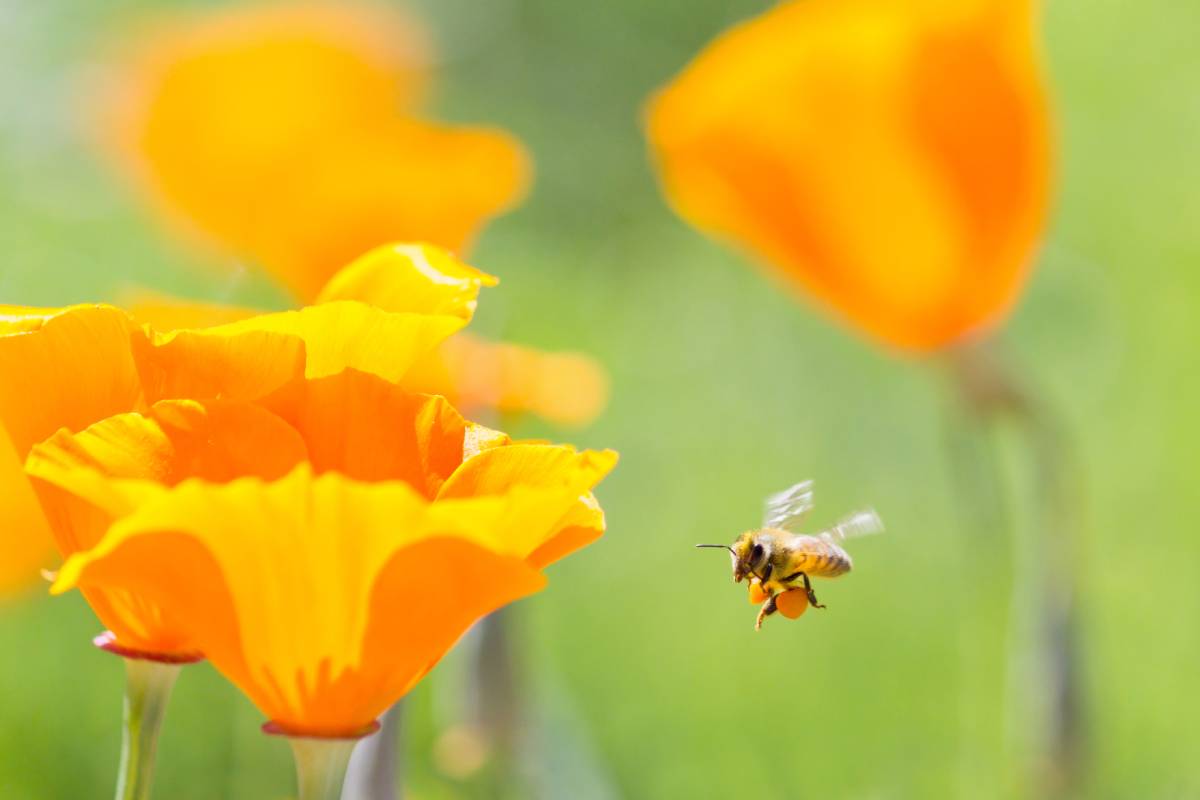
Honey bee collecting pollen from California golden poppies.
This ecoregion has been highly altered, especially by urbanization. The remaining habitat included 7% within protected areas and less than 1% outside protected areas. Thus, opportunities to increase protection in the short term are limited. With so little natural area remaining, the emphasis must be on protecting all that is left and managing it wisely.
Priority conservation actions for the next decade are: 1) protect all remaining natural and semi-natural habitat outside of existing protected areas; 2) improve management of protected areas by emphasizing the most imperiled species and natural communities and their threats; and 3) wherever feasible, restore natural lands and native communities.
Citations
1. Ricketts, T.H. et al. 1999. Terrestrial Ecoregions of North America: A Conservation Assessment. Island Press, Washington, D.C.
2. Keeley, J.E. 2000. Chaparral. Pages 203-253 in M.G. Barbour and W.D. Billings, eds. North American Terrestrial Vegetation, 2nd edition. Cambridge University Press, Cambridge, UK.
3. Sawyer, J.O., and T. Keeler-Wolf. 1995. A Manual of California Vegetation. California Native Plant Society, Sacramen
